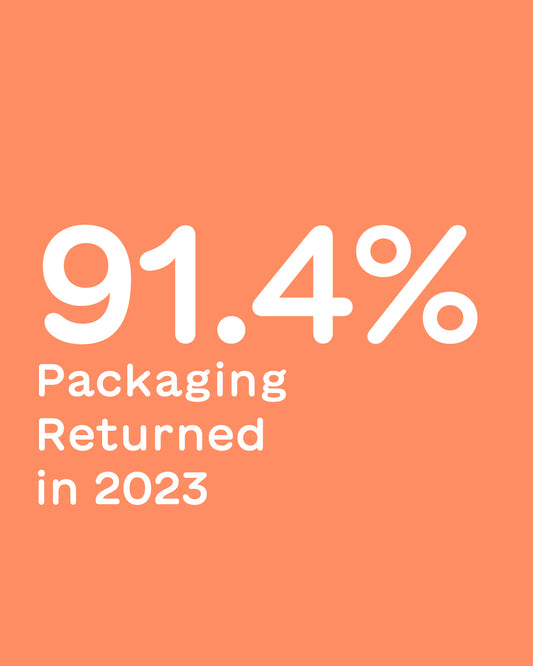
Our Carbon Footprint
Mitchell PlattWhilst waste and carbon are distinct challenges, they are interlinked as they both present inherent danger to the world as we know it.
Our mission at ZWBF is to eradicate waste with our reusable packaging.
However, I wanted to share with you that we are not doing this without taking into consideration, and reducing, the carbon we create.
Carbon Footprint Calculation
To calculate our footprint we partnered with Better Futures, an organisation that is funded by the Greater London Authority to support cleantech enterprises.
Whilst I know food production creates lots of carbon, I wasn’t expecting it to account for 82.5% of our total emissions. Especially as we don’t sell what I consider to be carbon intensive foods (e.g. meat and diary).

On the flip side, I was pleasantly surprised to see transport only accounted for 6.1%. Our emissions here are heightened due our necessity for returns with every order.
This low figure hasn’t happened by accident. It was one of the reasons we switched from DHL to Royal Mail. And also why we continue to work with Packfleet, who deliver carbon neutral in electrics vehicles to all our customers within M25.
Carbon Footprint of Packaging
This data has furthered the importance of creating packaging that first and foremost protects the food inside.
That’s why our next generation of packaging is going to be airtight and more durable than the fabric bags currently in use.
Below is a photo of me dissecting one of our jute bags during a packaging development workshop at Brunel University.

We'll be sharing more of what we're working on behind the scenes in the coming weeks and months.
Here's a link to the Better Futures Report
The Carbon Footprint Of Food
Better Futures were also kind enough to calculate the carbon of our top 10 selling products.
One of the more eye opening insights from this is when you compare orgnaic and non-organic ingredients.
I assumed the latter would have a lower footprint however, once the carbon from the manufacture of the pesticides and fertilisers are included, they have a greater overall footprint for each of our top ten best sellers.
We'll be doing lots more in this space in the coming weeks and month. Stay tuned
Read the Food Footprint Report.
Thanks for reading
Mitch



